Related Research Articles
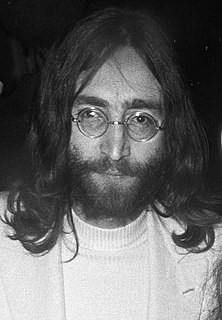
John Winston Ono Lennon was an English singer, songwriter, musician and peace activist who achieved worldwide fame as founder, co-songwriter, co-lead vocalist and rhythm guitarist of the Beatles. Lennon’s work was characterised by the rebellious nature and acerbic wit of his music, writing and drawings, on film, and in interviews. His songwriting partnership with Paul McCartney remains the most successful in history.

Yoko Ono is a Japanese multimedia artist, singer, songwriter, and peace activist. Her work also encompasses performance art and filmmaking.

Klaus Otto Wilhelm Voormann is a German artist, musician, and record producer.

The Granny Smith, also known as a green apple or sour apple, is an apple cultivar which originated in Australia in 1868. It is named after Maria Ann Smith, who propagated the cultivar from a chance seedling. The tree is thought to be a hybrid of Malus sylvestris, the European wild apple, with the domesticated apple Malus domestica as the polleniser.
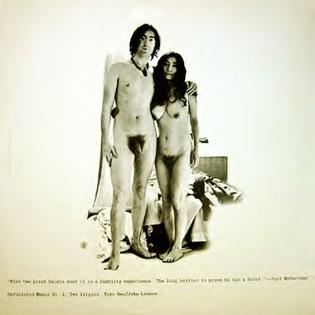
Unfinished Music No. 1: Two Virgins is the first of three experimental albums released by John Lennon and Yoko Ono on Apple Records. It was the result of an all-night session of musical experimentation with Yoko in John's home studio at Kenwood, while his wife, Cynthia Lennon, was on holiday in Greece. Lennon and Ono's 1968 debut recording is known not only for its avant-garde content, but also for its cover, which features the couple naked. This made the album controversial to both the public and the parent record company EMI, which refused to distribute it. In an attempt to avoid controversy, the LP record was sold in a brown paper bag, and distributed by Track and Tetragrammaton in the United Kingdom and the United States respectively. Two Virgins, while failing to chart in the UK, reached number 124 in the US. The album was followed six months later by Unfinished Music No. 2: Life with the Lions.
The Plastic Ono Band was a rock band formed by John Lennon and Yoko Ono in 1969 for their collaborative and solo projects based on their 1968 Fluxus conceptual art project of the same name.
Anthony D. Cox is an American film producer and art promoter. He is a former husband of Yoko Ono.

Indica Gallery was a counterculture art gallery in Mason's Yard, St James's, London from 1965 to 1967, in the basement of the Indica Bookshop. John Dunbar, Peter Asher, and Barry Miles owned it, and Paul McCartney supported it and hosted a show of Yoko Ono's work in November 1966, at which Ono met John Lennon.

John Dunbar is a British artist, collector, and former gallerist, best known for his connections to the art and music scenes of the 1960s counterculture.

Iain Stewart Macmillan was the Scottish photographer famous for taking the cover photograph for the Beatles' album Abbey Road in 1969. He grew up in Scotland, then moved to London to become a professional photographer. He used a photo of Yoko Ono in a book that he published in 1966, and Ono invited him to photograph her exhibit at Indica Gallery. She introduced him to John Lennon, and Lennon invited him to photograph the cover for Abbey Road. He worked with Lennon and Ono for several years, even staying for a while at their home in New York.
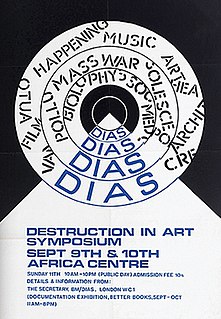
The Destruction in Art Symposium was a gathering of a diverse group of international artists, poets, and scientists to London from 9–12 September, 1966. Included in this number were representatives of Fluxus and other counter-cultural artistic undergrounds who were there to speak out on the theme of destruction in art.
The 14 Hour Technicolor Dream was a concert held in the Great Hall of the Alexandra Palace, London, on 29 April 1967. The fund-raising concert for the counterculture paper International Times was organised by Barry Miles, John "Hoppy" Hopkins, David Howson, Mike McInnerney and Jack Henry Moore. It was part-documented by Peter Whitehead in a film called Tonite Let's All Make Love in London.
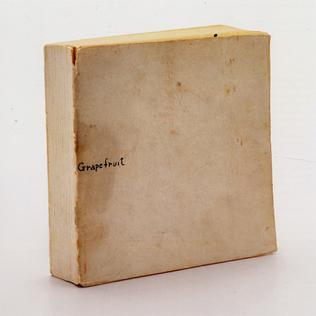
Grapefruit is an artist's book written by Yoko Ono, originally published in 1964. It has become famous as an early example of conceptual art, containing a series of "event scores" that replace the physical work of art – the traditional stock-in-trade of artists – with instructions that an individual may, or may not, wish to enact.
Grapefruit is one of the monuments of conceptual art of the early 1960s. She has a lyrical, poetic dimension that sets her apart from the other conceptual artists. Her approach to art was only made acceptable when [people] like Kosuth and Weiner came in and did virtually the same thing as Yoko, but made them respectable and collectible.

Spice Chess is an artist's multiple by the Japanese artist Takako Saito, while she was resident in the United States. Originally manufactured winter 1964–65, and offered for sale March 1965, the work is one of a famous series of disrupted chess sets referred to as Fluxchess or Flux Chess, made for George Maciunas' Fluxshop at his Canal Street loft, SoHo, New York City and later through his Fluxus Mail-Order Warehouse.
"Takako Saito engaged with Duchamp's practice but also with masculinist cold war metaphors by taking up chess as a subject of [her] art. Saito's fluxchess works... question the primacy of vision to chess, along with notions of perception and in aesthetic experience more generally.... Her "Smell Chess," "Sound Chess" and "Weight Chess" reworked the game of chess so that players would be forced to hone non-visual perception, such as the olfactory sense, tactility, and aurality, in order to follow chess rules." Claudia Mesch
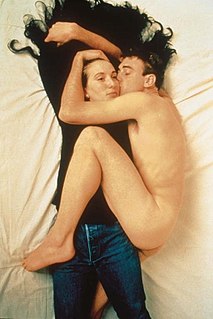
26 October 1993 is an artwork created in 1993 as a collaboration between English artists Henry Bond and Sam Taylor-Wood, both of whom were involved in the Young British Artists scene of contemporary art. It is a pastiche or remaking of a well-known photographic portrait of John Lennon and Yoko Ono that was made by Annie Leibovitz a few hours before Lennon's murder.

Riflemaker is a contemporary art business and exhibition space in London specialising in exhibiting and representing emerging artists. The building is a historic gunmaker's workshop off Regent Street. Built in 1712, it is one of the oldest public buildings in the West End of London. Riflemaker is also a publisher of artists books and host of a variety of events including poetry, music, film events, talks, discussions and performances in the space.
Ceiling Painting/Yes Painting is a 1966 conceptual artwork by the Japanese artist Yoko Ono.

Half-A-Room is a 1967 conceptual artwork by the Japanese artist Yoko Ono.
Self-Portrait was a 1969 film made by the artist Yoko Ono. Premiering at the Institute of Contemporary Arts ICA in London in 1969, the 42 minute film consisted of a single shot of John Lennon's semi-erect penis. The film has since disappeared and is now lost.

Mason's Yard is a street in London SW1, England.
References
- 1 2 3 4 Bruce Handy (May 2015). "The Two Must-See, Must-Do, Must Step-On Works at Yoko Ono's MoMA Show". Vanity Fair . Retrieved 10 January 2018.
- 1 2 3 4 Beram, Nell; Boriss-Krimsky, Carolyn (2012). Yoko Ono: Collector of Skies. Abrams. ISBN 978-1-61312-513-7.
- ↑ "Apple. Yoko Ono. 1966". Museum of Modern Art. Retrieved 11 January 2018.
- ↑ Anthony Barnes (12 November 2006). "John and Yoko: Love at first bite" . The Independent . Archived from the original on 2022-05-08. Retrieved 10 January 2018.